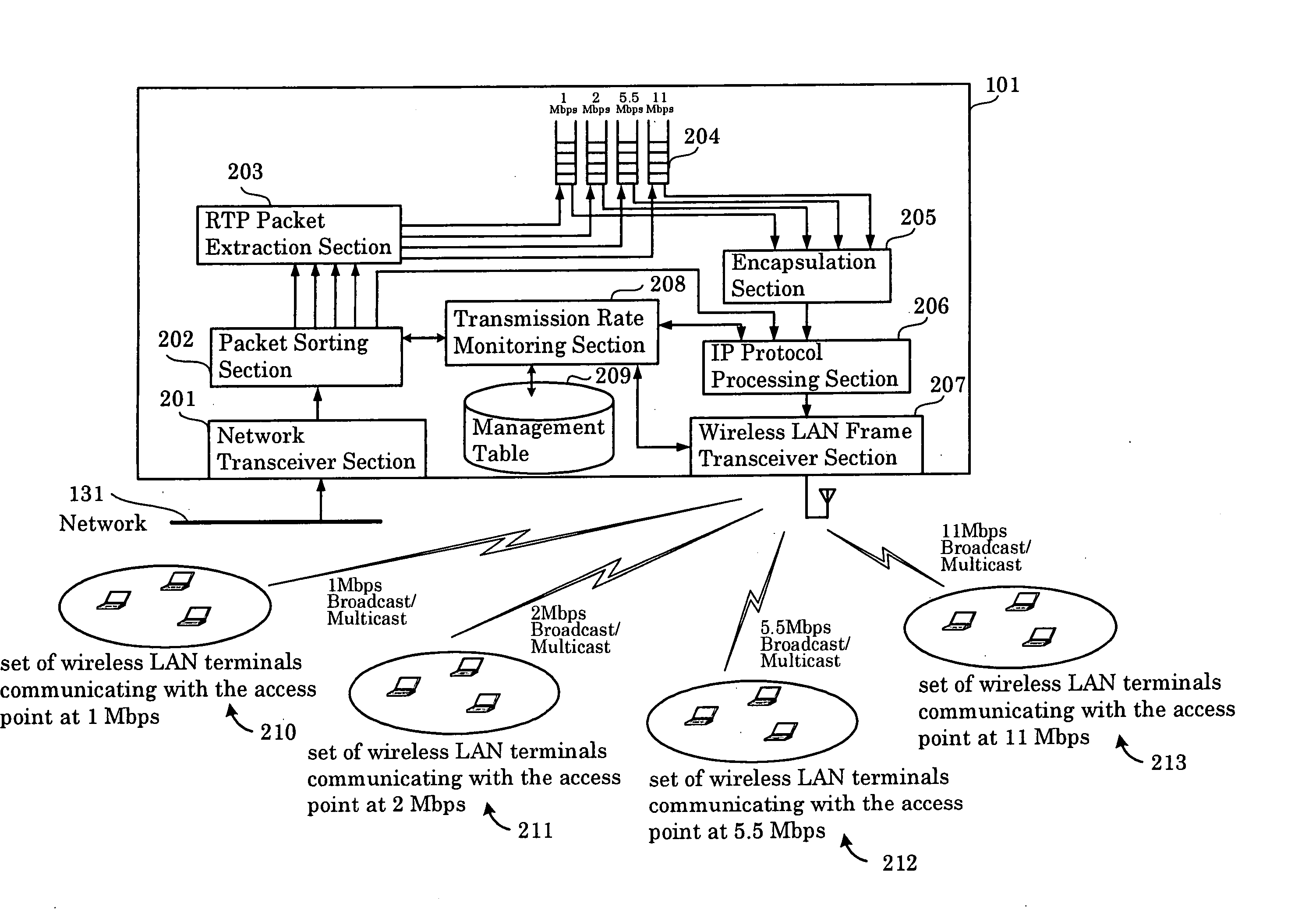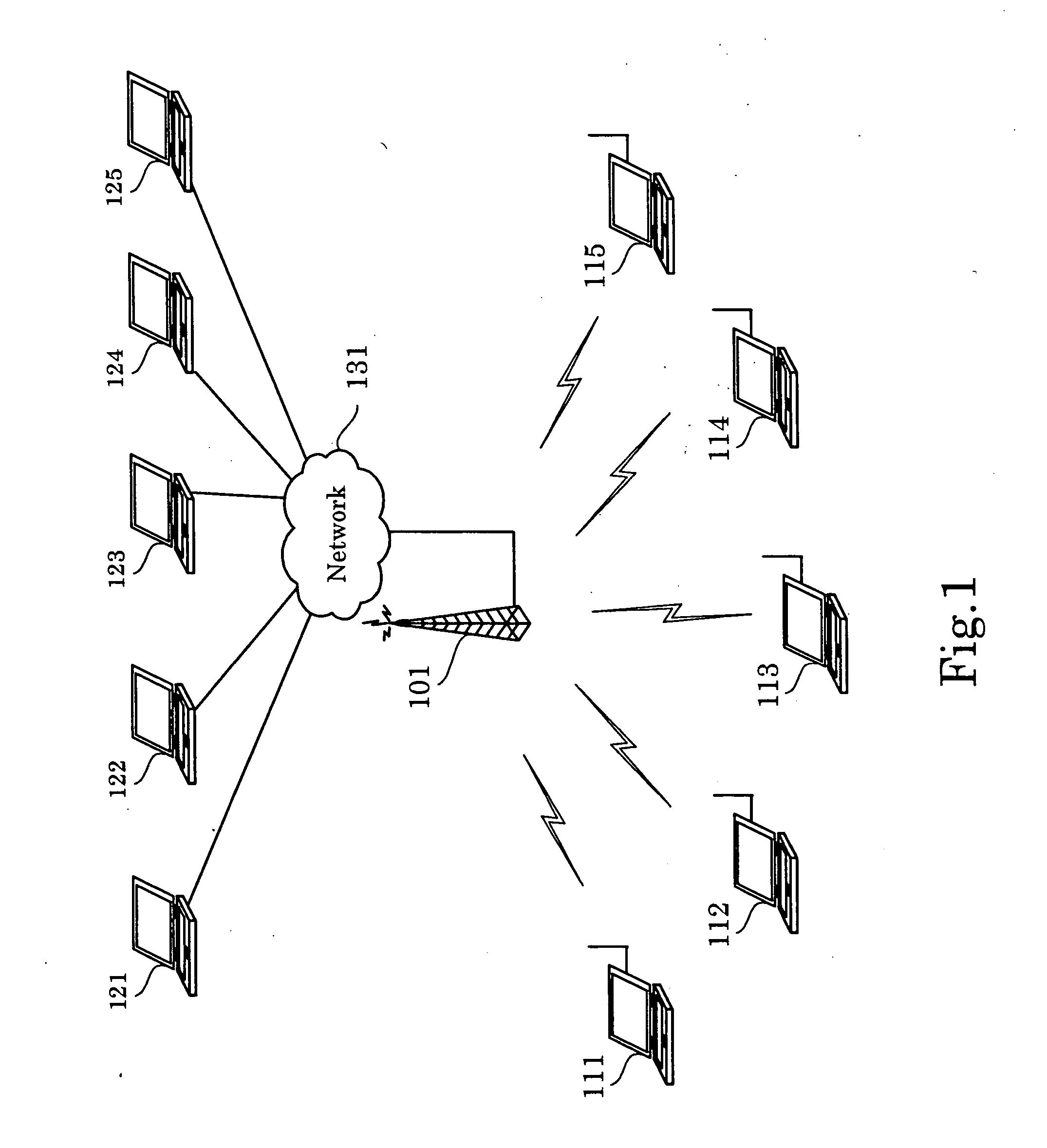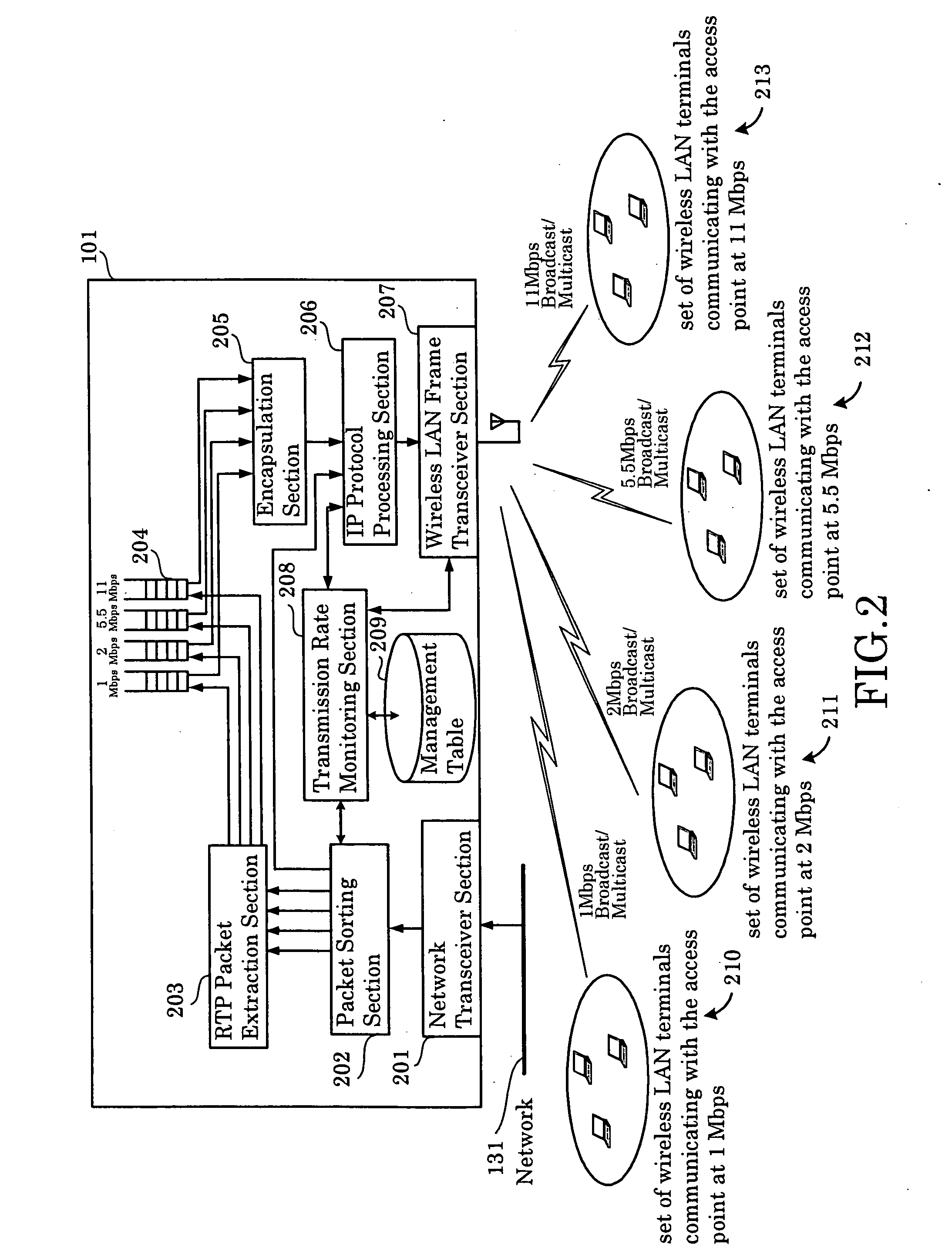Packet transmission method and apparatus
a packet and transmission method technology, applied in the field of packet transmission methods and apparatuses, can solve the problems of inefficient use of original transmission speed, and large time occupied by the header transmission, so as to increase the maximum number of simultaneous calls, shorten the time, and increase the transmission rate
- Summary
- Abstract
- Description
- Claims
- Application Information
AI Technical Summary
Benefits of technology
Problems solved by technology
Method used
Image
Examples
first embodiment
[0038]FIG. 2, which is a block diagram illustrating a first embodiment of the present invention, illustrates an example, in which the packet transmission apparatus of the present invention is implemented as the access point 101 shown in FIG. 1.
[0039] The access point 101 is made up of a network transceiver section 201, a packet sorting section 202, an RTP (Real-time Transport Protocol) packet extraction section 203, encapsulated packet queues 204, an encapsulation section 205, an IP protocol processing section 206, a wireless LAN frame transceiver section 207, a transmission rate monitoring section 208, and a management table 209.
[0040] The network transceiver section 201, which is a protocol processing means located in the physical and data link layer of the OSI 7 layer model, receives data from the network 131 and transmits data to the network 131.
[0041] In addition to IP protocol stack processing, the packet sorting section 202, which is located in the network layer of the OSI...
second embodiment
[0065]FIG. 8, which is a block diagram illustrating a second embodiment of the present invention, illustrates an example, in which the packet transmission apparatus of the present invention is implemented as an access point 101, in the same manner as in the first embodiment.
[0066] The access point 101 is different from the first embodiment in that there is provided a specified rate packet extraction section 214, the packet sorting section 202 does not possess the function of sorting by transmission rate and only sorts packets into packets that should be encapsulated and those that shouldn't, with the encapsulated packet queues 204 storing packets of all transmission rates without pre-processing by transmission rate.
[0067] Next, the operation of the present embodiment is explained with reference to the flow chart of FIG. 9. In the present embodiment, the packet sorting section 202 classifies packets into two types only, i.e. packets to be encapsulated and general packets. Receive p...
third embodiment
[0069] Although the configuration of the present embodiment is similar to the configuration of the first embodiment illustrated in FIG. 2, the method used for the acquisition of terminal transmission rates between the wireless LAN frame transceiver section 207 and transmission rate monitoring section 208 is different. The operation of the wireless LAN frame transceiver section 207 is explained by referring to the flow chart of FIG. 10.
[0070] First of all, when the MAC entity in the wireless LAN frame transceiver section 207 receives a PHY-RXSTART.indication from the PHY sub-layer (S1001), the wireless LAN frame transceiver section 207 extracts the data rate stored in the RXVECTOR sent along with the PHY-RXSTART.indication (S1002). Next, the source MAC address contained in the MAC header of the data sent from the PHY sub-layer subsequent to the PHY-RXSTART.indication is acquired (S1003). Upon acquisition of the transmission rate and the MAC address, they are conveyed to the transmis...
PUM
 Login to View More
Login to View More Abstract
Description
Claims
Application Information
 Login to View More
Login to View More - R&D
- Intellectual Property
- Life Sciences
- Materials
- Tech Scout
- Unparalleled Data Quality
- Higher Quality Content
- 60% Fewer Hallucinations
Browse by: Latest US Patents, China's latest patents, Technical Efficacy Thesaurus, Application Domain, Technology Topic, Popular Technical Reports.
© 2025 PatSnap. All rights reserved.Legal|Privacy policy|Modern Slavery Act Transparency Statement|Sitemap|About US| Contact US: help@patsnap.com



